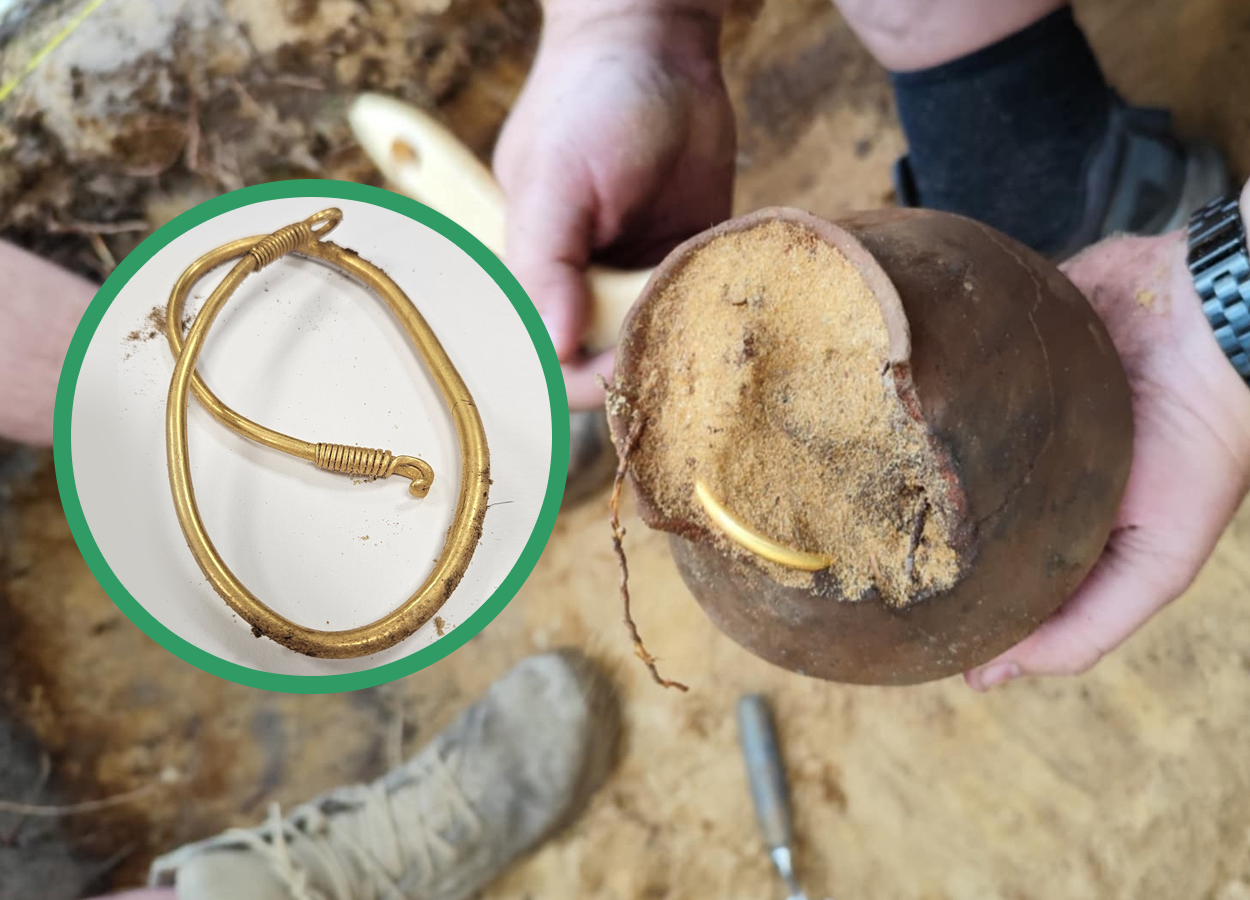In the quiet woods near Kalisz, Poland, a group of amateur archaeologists uncovered not one, but three extraordinary treasures over the span of just five weeks this summer.
Their discoveries span centuries, revealing a remarkable cross-section of Poland’s ancient and medieval past.
The Denar Kalisz Group, in cooperation with the Voivodeship Office of Environmental Protection in Kalisz, conducted their exploration in the Grodziec Forest District of Zbiersk.
Their work began in early June with the discovery of a Roman-period burial ground linked to the Przeworsk culture. Among the finds was the grave of a warrior, complete with a spearhead and shield boss.
Just days later, they recovered a coin from the 11th century alongside a small ceramic vessel decorated with striations. The pot was sealed with soil, making its contents a mystery until it could be opened under controlled conditions at the University of Science in Kalisz.
Inside were 631 coins and fragments, confirming that the loose coin nearby had indeed been a sign of hidden wealth.
By the end of June, another ceramic pot was unearthed, again containing a cache of coins. While these first two finds were impressive in themselves, the third discovery in mid-July eclipsed them both.
The final vessel revealed a gleam of gold peeking through the packed soil. Initially thought to be a bracelet, X-ray analysis showed it was a complete gold torc — a type of rigid necklace — with a hook and loop closure.
Weighing an impressive 222 grams, the necklace had been bent and folded to fit inside the pot. Dating to the 5th century, it is believed to be connected to the Goths who inhabited the region during the Migration Period. Similar pieces have been found in Scandinavia, some engraved with runes, but this is the first example discovered in Poland.
The gold torc will be transferred to the Kalisz Regional Museum, where it will eventually go on public display — a glittering testament to a summer of extraordinary finds and a reminder that sometimes, history lies just beneath our feet, waiting for the right hands to unearth it.
Header Image Credit : Denar Kalisz Group
Sources : History Scout





